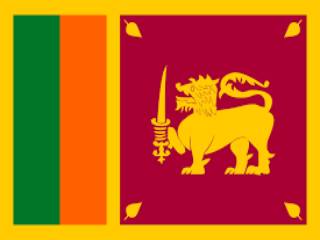Vaishakh Shukla Navami, Kaliyug Varsha 5113
By Bob Woodward
There was a pause, as if the friend knew that Kuwaiti’s words meant he had returned to bin Laden’s inner circle, and was perhaps at the side of the al-Qaeda leader himself.
The friend replied, “May God facilitate.” When US intelligence officials learned of this exchange, they knew they had reached a key moment in their decade-long search for al-Qaeda’s founder. The call led them to the high-walled compound in Abbottabad, a city 35 miles north of Pakistan’s capital.
“This is where you start the movie about the hunt for bin Laden,” said one US official briefed on the intelligence-gathering leading up to the raid on the compound early Monday. The exchange and several other pieces of information, other officials said, gave President Obama the confidence to launch a politically risky mission to capture or kill bin Laden, a decision he took despite dissension among his key national security advisers and varying estimates of the likelihood that bin Laden was in the compound.
The officials would speak about the collection of intelligence and White House decision making only on the condition that they not be named.
US intelligence agencies had been searching for Kuwaiti for at least four years; the call with the friend gave them the number of the courier’s cellphone. Using a vast number of human and technical sources, they tracked Kuwaiti to the compound.
The main three-story building, which had no telephone lines or Internet service, was impenetrable to eavesdropping technology deployed by the National Security Agency. US officials were stunned to realise that whenever Kuwaiti or others left the compound to make a call, they drove some 90 minutes away before even placing a battery in a cellphone.
As intelligence officials scrutinised images of the compound, they saw that a man emerged most days to stroll the grounds of the courtyard for an hour or two. Soon, analysts began calling him “the pacer”. The imagery never provided a clear view of his face.
The pacer never left the compound. His routine suggested he was not just a shut-in but almost a prisoner.
Was the pacer bin Laden?
Bin Laden was at least 6-foot-4, and the pacer seemed to have the gait of a tall man. The White House asked the National Geospatial-Intelligence Agency, which provides and analyses satellite imagery, to determine the pacer’s height. The agency said the man’s height was somewhere between 5-foot-8 and 6-foot-8, according to one official.
The estimate was of limited reliability because of the lack of information about the size of the building’s windows or the thickness of the compound’s walls.
In one White House meeting, CIA Director Leon E. Panetta told Obama and other top national security officials that the general rule in gathering intelligence was to keep going until a target such as the Abbottabad compound ran dry.
Panetta said that point had been reached. It was too risky to send in a human spy or move any closer with electronic devices.
The Washington Post reported Friday that the agency established a safe house in Abbottabad for a small team that monitored the compound in the months leading up to the raid.
The decision
Obama and his advisers debated the options, officials said. One option was to fire a missile from a Predator or Reaper aerial drone. Such a strike would be low-risk, but if the result was a direct hit, the pacer might be vaporised and officials would never be certain they had killed bin Laden.
If the drone attack missed, as had happened in attacks on high-value targets, bin Laden or whoever was living in the compound would flee and the United States would have to start the hunt from scratch.
Panetta designated Navy Vice Adm. William H McRaven, who had headed the Joint Special Operations Command (JSOC) for nearly three years, to devise a boots-on-the ground plan for the special forces that became known as ‘the McRaven option’.
McRaven had increased the intensity of Special Operations raids, especially in Afghanistan. During his first two years as head of JSOC, the ‘jackpot rate’ — when the strikes got their intended target — jumped from 35 percent to more than 80 percent.
His decision to assign the operation to the Navy SEALs, a Special Operations unit with extensive experience in raids on high-value targets, was critical. SEALs have a tradition of moving in and out fast, often killing everyone they encounter at a target site. Most members of the SEAL team in the bin Laden raid had been deployed to war zones a dozen or more times.
A ‘pattern of life’ study of the compound by intelligence agencies showed that about a dozen women and children periodically frequented it.
Specific orders were issued to the SEALs not to shoot the women or children unless they were clearly threatening or had weapons. (During the mission, one woman was killed and a wife of bin Laden was shot in the leg.) Bin Laden was to be captured, one official said, if he “conspicuously surrendered.”
The longer such raids take, the greater the risk to the SEALs. One senior official said the general philosophy of the SEALs is: “If you see it, shoot it. It is a house full of bad guys.”
Several assessments concluded there was a 60 to 80 percent chance that bin Laden was in the compound. Michael Leiter, the head of the National Counterterrorism Center, was much more conservative. During one White House meeting, he put the probability at about 40%.
When a participant suggested that was a low chance of success, Leiter said, “Yes, but what we’ve got is 38% better than we have ever had before.”
The assault
Officials said Obama’s national security advisers were not unanimous in recommending he go ahead with the McRaven option. The president approved the raid at 8:20 am Friday.
During the assault, one of the Black Hawk helicopters stalled, but the pilot was able to land safely. The hard landing, which disabled the helicopter, forced the SEALs to abandon a plan to have one team rope down from a Blackhawk and come into the main building from the roof. Instead, both teams assaulted the compound from the ground.
The White House initially said bin Laden was shot and killed because he was engaged in a fire fight and resisted. Later, White House press secretary Jay Carney said bin Laden was not armed, but Carney insisted he resisted in some form. He and others have declined to specify the exact nature of his alleged resistance, though there reportedly were weapons in the room where bin Laden was killed.
A senior Special Operations official said that SEALs would avoid providing more details about the raid, to prevent the disclosure of methods central to their success. The individuals who took part in the raid, the official said, would not grant interviews and had signed nondisclosure agreements about their classified work.
“They are interested in closing ranks and getting on with business,” he said.
SEALs scooped up dozens of thumb drives and several computer hard drives that are now being scrutinised for information about al-Qaeda, especially an address, location or cellphone number for Ayman al-Zawahiri, bin Laden’s second in command. But officials said the delicate process of sifting this intelligence bonanza is made more challenging because of worries that using the wrong passwords could trigger a pre-planned erasure of digital information.
In the White House Situation Room on Sunday night, the president and his national security team watched a soundless video feed of the raid.
When bin Laden’s corpse was laid out, one of the Navy SEALs was asked to stretch out next to it to compare heights. The SEAL was 6 feet tall. The body was several inches taller.
After the information was relayed to Obama, he turned to his advisers and said: “We donated a $60 million helicopter to this operation. Could we not afford to buy a tape measure?”
Source : Hindustan Times
Also See
 |
Save temples from Anti–Hindus
Temples are the centres of Hindu Dharma. Anti Hindu forces like Muslims, Congress, Christians has constantly targetted them. HJS is fighting against these forces.
|
 |
Protest against Anti faith bill Maharashtra (India) government is about to pass an anti Hindu bill. This draconian law that allows govt. to arrest without bail and initiate criminal proceedings against devotees and saints. |
 |
Grave sins of Congress are driving India to doom!
Highest sins of the Congress which is taking the country to Hell and of all political parties who are doing nothing about it but just letting that happen ! |




